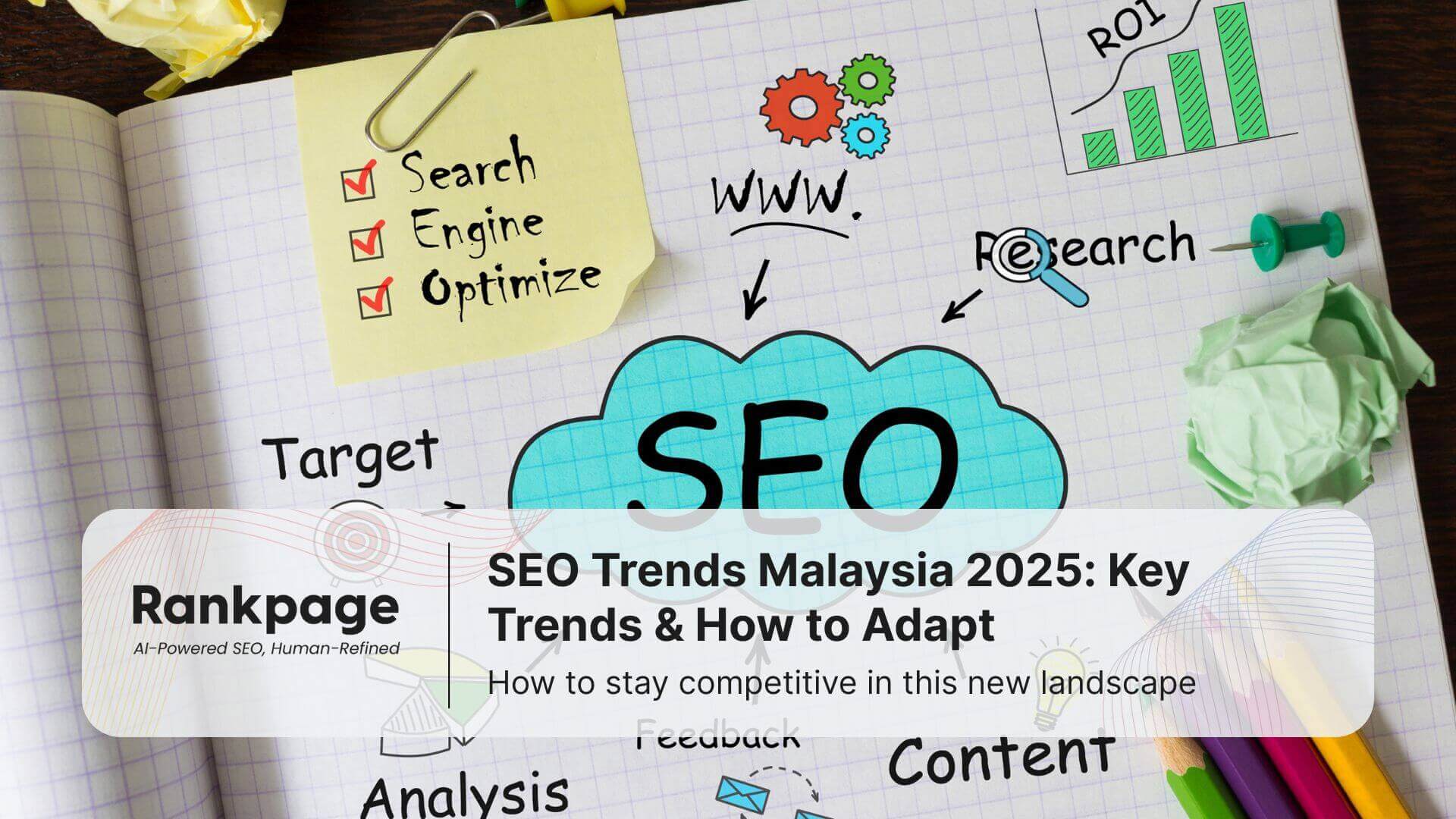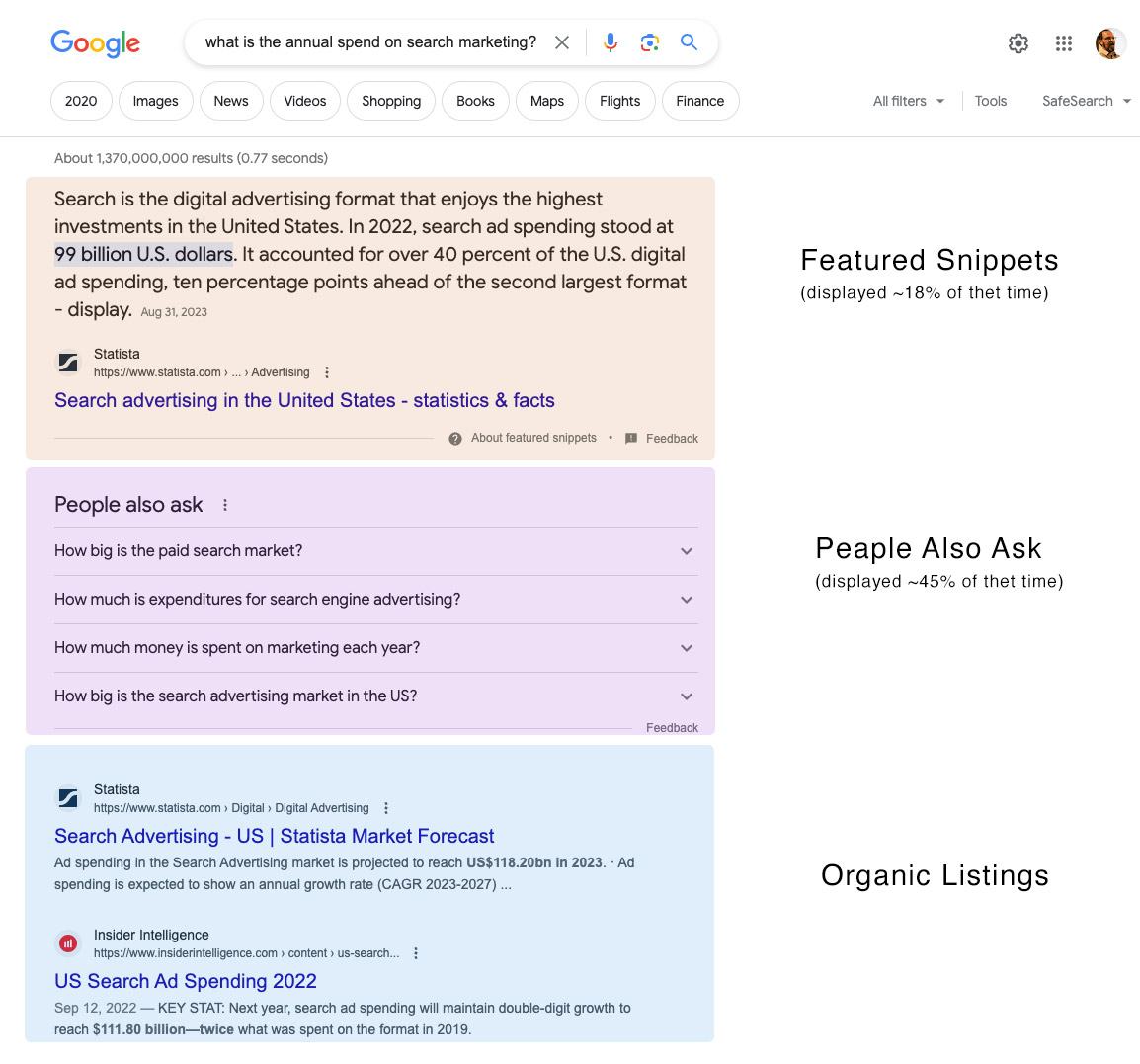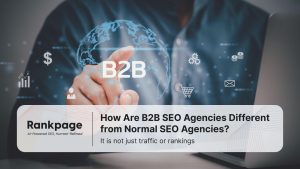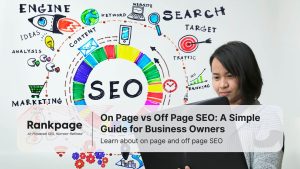Key Takeaways
- AI-driven search & Google’s SGE are reshaping click behavior: summary boxes reduce organic CTR.
- Local & multilingual optimisation will be more important than ever, especially for Bahasa Malaysia and mixed-language queries.
- High-quality, original, experience-based content will outrank generic or repetitive content.
- Technical performance, structured data, and voice/visual search optimisation are no longer optional.
- Combining SEO with paid and local authority strategies will improve visibility in competitive AI-affected SERPs.
In 2025, SEO in Malaysia is entering a turning point. Artificial intelligence isn’t just another tool, it’s reshaping how people search, what they expect, and how Google decides what to show. With the rollout of Google’s Search Generative Experience (SGE), evolving user behaviour (voice, local, multilingual), and intensifying competition, simply “doing SEO” like before won’t cut it. Partnering with an experienced SEO agency helps businesses adapt faster, ensuring strategies stay aligned with AI-driven search trends.
This guide explains what SMEs should expect, what to adopt (and fast), and how to stay competitive in this new landscape.
Table of Contents
How Will Google SGE Affect SEO in Malaysia?
Google SGE now delivers AI summaries that appear before traditional links. These answer boxes reduce the need for users to click through.
What to do:
- Structure content to be clear, complete, and conversational
- Use schema (FAQ, HowTo, Q&A) to enhance discoverability
- Optimise for long-tail and natural language queries
At this point, you might be confused and feel like SGE and AEO are similar things, are they the same?
AEO (Answer Engine Optimization): To get content to appear as the direct answer (featured snippets, voice responses, FAQ sections) in traditional and emerging search formats.
SGE (Search Generative Experience): To provide richer, AI‑generated summaries/answers that may pull from many sources, synthesizing into a conversational or overview format.
SGE and AEO are not the same, but they overlap heavily. AEO is more about practice and structure, SGE is about execution in an AI‑driven interface. To succeed in 2025 and beyond, you’ll want to do both: optimize content so it can be used as answers (AEO), and ensure it’s prepared to be used or cited by AI‑generative features like SGE.
Example of featured snippets and ranking:
What Makes Content Rank?
E-E-A-T & content depth outperform surface-level SEO tactics.
Google’s algorithm updates reward content that reflects first-hand experience, authority, and trust. Thin or generic content is declining in visibility.
What to do:
- Include case studies, quotes, data, or local examples
- Use real authors with bios and credentials
- Audit outdated or duplicate content and improve or remove it
Why Local & Multilingual Optimisation Is Critical
For local businesses in Malaysia, the battle for visibility will be won or lost in the local search results. As AI and automated search become more prevalent, users will rely on them for immediate, geographically relevant results.
“Local SEO tactics will define winners in region-based queries.”—SEO Specialist, Rankpage
Mixed-language and “near me” searches are surging. Users in Malaysia often mix English and Bahasa Malaysia. Local intent queries (“kedai makan terdekat” or “spa Mont Kiara”) require geographically and culturally specific optimisation.
What to do:
- Publish content in Bahasa Malaysia or dual-language.
- Optimise and regularly update Google Business Profile
- Use localised keyword phrases that reflect how users actually search.
What Technical Factors Matter More Now?
Mobile performance and structured data are must-haves.
Mobile-first indexing means poor mobile UX or slow performance can cost rankings. Schema helps content appear in AI answers and visual/voice search.
What to do:
- Test site speed (especially on mobile) and fix delays
- Use alt tags, transcripts, and responsive images
- Implement schema for key content types (FAQPage, HowTo)
How Can Local SMEs Stay Competitive?
Combining SEO + paid search + local PR builds resilience.
Relying solely on SEO is riskier with AI answers reducing traffic. Blending PPC, SEO, and authority-building creates more stable performance.
What to do:
- Use Google Ads to test keyword demand and support organic gaps
- Build backlinks from trusted local directories or media
- Strengthen GBP listings with frequent updates and responses
Top Challenges
Challenge | Why It’s Risky | Mitigation |
Overuse of AI tools | Leads to generic or penalised content | Always edit with local insight & original data |
Ignoring mixed-language use | Misses real user queries | Research queries in Bahasa Malaysia too |
Poor technical upkeep | Site underperforms even with good content | Regular audits and improvements |
Sole focus on organic | Reduced clicks from AI summaries | Combine SEO with paid and brand strategies |
SEO Checklist (Malaysia Edition)
1. Hit Core Web Vitals targets
This isn’t just about a faster site; it’s about giving users a good experience. Aim for LCP ≤ 2.5s, INP < 200 ms, and CLS ≤ 0.1 at the 75th percentile. These UX thresholds are what Google references, and they correlate with better engagement and eligibility for full search features.
How to achieve it: Use Google’s PageSpeed Insights to diagnose issues. Focus on key metrics like Largest Contentful Paint (LCP). Look for opportunities to compress images, use next-gen formats (like WebP), minify CSS and JavaScript, and leverage browser caching.
2. Implement Schema Markup
Schema helps Google understand your content and makes pages eligible for rich results (FAQ, How-To, etc.). It can improve clarity and discoverability, but it doesn’t guarantee inclusion or citations in AI Overviews.
How to achieve it: Use a JSON-LD format to mark up key page elements. For a blog post, this includes Article schema. For a guide, use How To schema. For Q&A sections, FAQ Page schema can get you into the “People Also Ask” box.
3. Optimised Google Business Profile (GBP)
Your GBP is your most powerful tool for local SEO. A well-optimized profile is key to appearing in the local pack and on Google Maps.
How to achieve it: Fill out your profile completely with accurate information. Add photos regularly, post updates about promotions or events, enable messaging, and, most importantly, encourage and respond to customer reviews.
4. Use of Bahasa Malaysia Keywords & Dual-Language Pages
Many Malaysians search using a mix of languages. Ignoring Bahasa Malaysia or other local languages means you’re missing out on a huge portion of the market.
How to achieve it: Conduct keyword research in Bahasa Malaysia, not just English. If your content is relevant to a specific region, use localized terms like “kedai kopi” or “tuisyen”. Create dual-language pages or dedicated content in both languages to capture a wider audience.
5. Alt Text for All Images
Alt text is an accessibility standard that also gives search engines context about your images. This is becoming more important with the rise of visual search.
How to achieve it: Write descriptive alt text for every image. For example, instead of “image.jpg,” use “Young Malaysian ‘lenglui’ woman enjoying Nasi Lemak at a street food stall in Kuala Lumpur Chee Cheong Kai.”
6. Structured H1-H3 Hierarchy
Using H1, H2, and H3 headings creates a clear hierarchy for both readers and search engines. It breaks up large blocks of text and makes your content scannable.
How to achieve it: Your main topic should be your H1. Subtopics should be H2s. Use H3s for points that fall under an H2. This logical flow helps search engine crawlers understand your content’s structure.
7. Regular Technical Audits & Broken Link Checks
Technical issues can silently kill your site’s performance. Regular audits help you find and fix problems before they impact your rankings.
How to achieve it: Use tools like Google Search Console to monitor for errors. Check for broken links (404 errors), redirect chains, and crawl errors.
8. Backlink Profile from Trusted .my Domains
Backlinks from authoritative local sites signal to Google that your site is trustworthy and relevant to the Malaysian market.
How to achieve it: Get featured in local blogs, news outlets, and business directories. Look for opportunities to collaborate with other businesses in your niche.
9. Case Studies or Original Data on Top Pages
Content that demonstrates expertise and firsthand experience is more likely to rank well. This is a core part of Google’s E-E-A-T guidelines (Experience, Expertise, Authoritativeness, and Trust).
How to achieve it: Include original research, survey data, or real-life case studies on your most important pages. This proves your authority and makes your content unique and valuable.
Final Thoughts: Preparing for SEO Malaysia
The SEO trend is shifting dramatically, and the strategies that worked in the past may not be enough for 2025. Success will depend on your ability to adapt to new technologies and changing user behavior. Here’s a final checklist of actions to take now.
- Audit your current content and technical performance
- Create deeper, original content with strong E-E-A-T
- Embrace local and multilingual optimisation
- Monitor SGE and AI summary features
- Diversify traffic strategies with paid and local authority-building
Ready to move past outdated tactics? Reach out for SEO service for a site audit and an AI-ready strategy built for long-term growth.
Frequently Asked Questions About SEO Trends in Malaysia
What is Google SGE, and how does it work in Malaysia?
It’s Google’s AI-powered ‘AI Overviews’ experience that shows summarized answers with cited sources. As of May 20, 2025, AI Overviews are available in Malaysia (including Malay support), but visibility varies by query and language.
Do I still need a website if AI gives users the answer?
Yes. Your site can still be the source cited by SGE. Without content, AI has no reason to mention you.
What’s the role of Bahasa Malaysia in SEO?
Crucial. Many local searches happen in Bahasa Malaysia or mixed-language. Ignoring this limits reach.
How soon can I see results from SEO changes?
It depends. Some see impact in 3–6 months, competitive niches may take longer.
Is voice search big in Malaysia?
Assistant and voice behaviors are rising across APAC, and visual/voice discovery is growing but robust Malaysia-specific adoption stats are limited. Optimise Q&A content and local intent so you’re eligible when users speak or tap to search.
Are reviews really that important?
Yes. Google uses them for local rankings, and they influence customer trust heavily.






